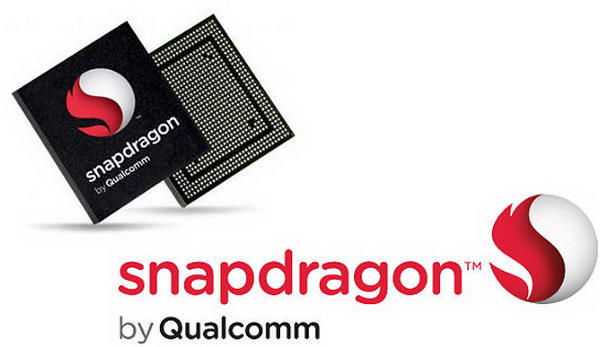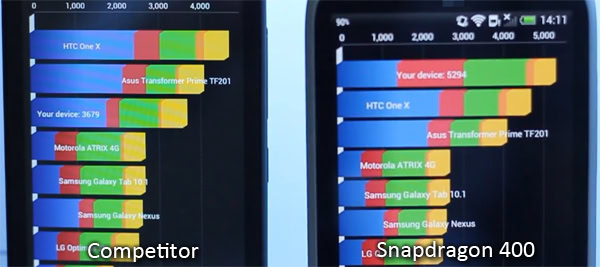Affiliate links on Android Authority may earn us a commission. Learn more.
Believe what you see, not what you hear, says Qualcomm

Which is better a fast dual-core or slow quad-core? I remember this same discussion cropping up with the first quad-core PC processors. Back then the general conclusion was that it depends on how you were using it.
A brute power dual-core approach was great for gaming and situations where you need a high clock speed, where as a slower multi-core was an elegant solution for multi-tasking and greater performance could be achieved when running multi-threaded applications.
I don’t believe that very much has changed when it comes to smartphones and neither does Qualcomm, as it’s keen to prove to us all that it’s not always the number of cores that count, but the quality of those cores as well.
To prove this Qualcomm has come up with four side-by-side videos, showing off the power of the new dual-core Snapdragon 400 chip against an unspecified quad-core competitor. The Snapdragon 400 is the little brother of Qualcomm’s premier Snapdragon 600 and 800 chips. It’s made up from a dual-core Krait 200 CPU clocked at 1.2Ghz and uses an Adreno 305 GPU. The competitor is totally unknown, other than that it’s a quad-core chip clocked at the same 1.2Ghz, so it should make for an interesting, if not somewhat anonymous showdown.
These video tests challenge the processors at tasks like web surfing, gaming and graphics, navigation and GPS fix, and a Quadrant benchmark.
The Snapdragon 400 beats the unnamed quad-core chip hands down in every test, but I can’t help but feel that the competing chip is deliberately bottle-necked to prove Qualcomm’s point.
There are definitely a few warning signs in some of these results. I found the Quadrant benchmark to be particularly misleading, if you compare the actual CPU scores (blue part of the graph) you’ll find that the dual core Qualcomm chip actually scores lower than the competing quad core.
Most of the Snapdragon chip’s total is significantly improved by memory and I/O read and write scores (red and green), which are affected by other aspects of the phone than just the CPU.

Also the gaming comparison is heavily GPU dependent, and since we have no idea which GPU is in the competing chip this could well be another test swung in Qualcomm’s favor due to a bottleneck in the competing chip.
Of course this doesn’t mean that Qualcomm isn’t making a good point. A well put together, balanced dual-core system can beat a poorly produced quad core chip. But don’t be fooled into thinking that Qualcomm’s Krait 200 is faster than a decent quad-core processor in every scenario.
Qualcomm is totally right to make the point that execution orders, pipeline depth, cache sizes, and manufacturing processes can have a big impact on the performance of a processor, and it’s certainly not all about pumping up the number of cores. But is this going to help the average consumer break out from the habit of picking something because it has more cores? Probably not.
So point proven? Well yes, sort of. Qualcomm has confirmed what techies already knew, but the closed conditions of the tests leaves you wondering. How would Qualcomm’s dual-core chip fair against a popular SoC, like the Exynos 4 Quad, if a third party had been running the test? I suppose we’ll find out eventually.